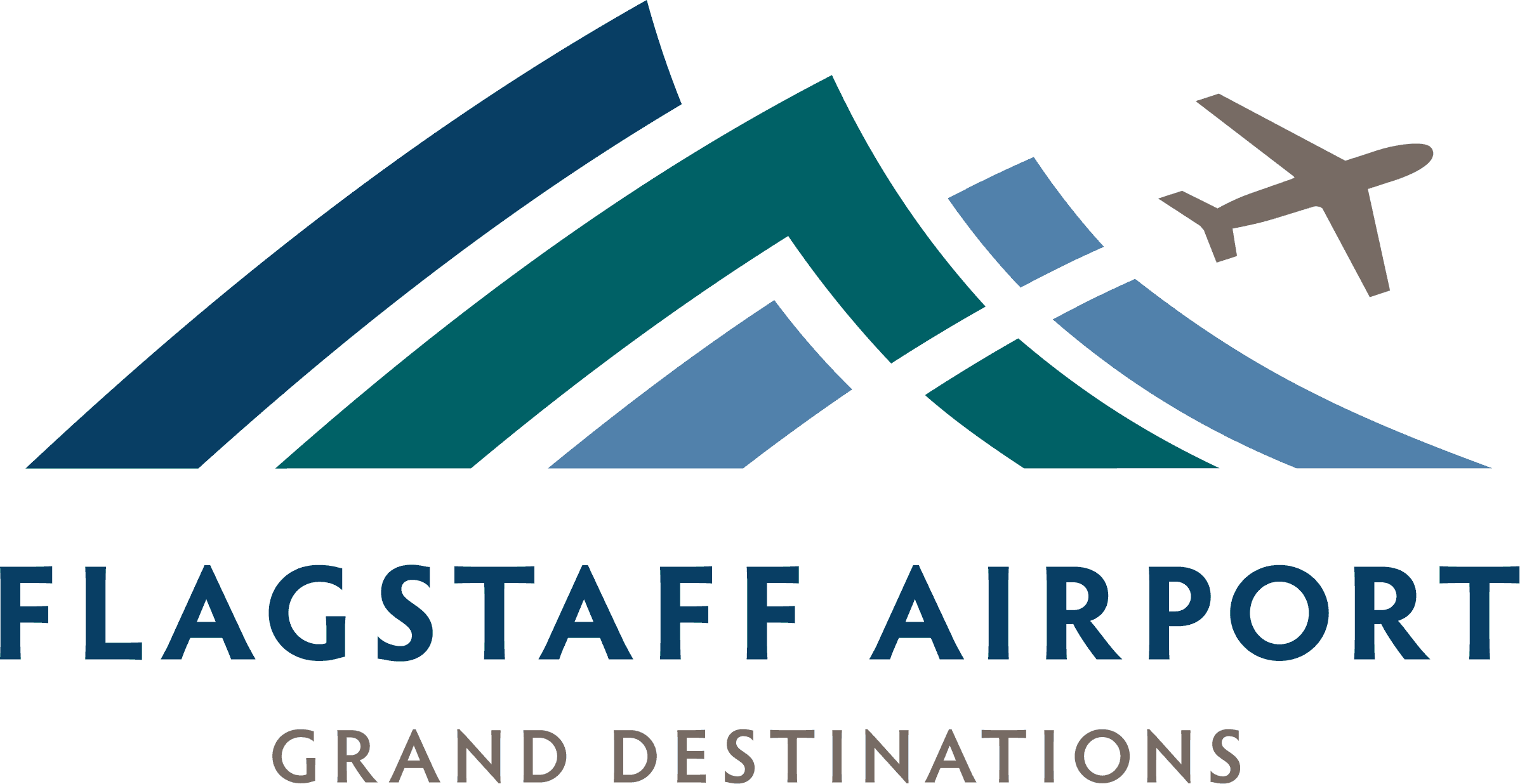Author: Kristin V. Shaw, Airport Improvement
Published in: November-December 2023
As the closest commercial airport to the Grand Canyon and red rock area of Sedona, Flagstaff Pulliam Airport (FLG) itself is very scenic. Sitting on nearly 800 acres of former U.S. Forest Service land, the city-owned airport has stunning mountain views for tourists and other visitors. Scheduled service includes daily nonstops to/from Phoenix and Dallas on American Airlines, and general aviation traffic accounts for 68% of overall flight operations.
For many years, FLG generously provided complimentary parking. However, passenger volume has steadily increased since the current terminal was built in 1993, and the airport was outgrowing its single parking lot. In fact, the parking area was bursting at the seams. When its 385 parking spaces were full, vehicles often overflowed into the aisles and onto nearby landscaping.
As an added complication, some people took advantage of the free amenity by parking at the airport and never coming back, or using the terminal lot for long-term parking unrelated to air travel. Something had to change, and airport leaders came up with a two-fold solution: transforming the existing lot next to the terminal into a pay-to-stay facility with a parking enforcement system, and building a new 415-spot paid economy lot, more than doubling overall parking capacity. Both lots are credit card-only. Customers pay from their vehicles at the exit lanes or at a pay-on-foot station near baggage claim in the terminal.
Because the new infrastructure and payment collection system were not eligible for federal funding, the $5 million project was funded with a loan from the city.
Beyond securing money to pay for the parking improvements, FLG had to communicate the upcoming change to passengers and the Flagstaff community. As expected, some travelers were not happy to lose free parking. But Airport Director Brian Gall and his team assured them that a small fee was worth the extra convenience of knowing parking would be available.
“Small fee” isn’t marketing hype. The first hour of parking at FLG is still complimentary in both lots, and each additional hour costs $2. The maximum daily rate is $6 for the economy lot and $8 for the lot closer to the terminal. Weekly rates are discounted to $36 in the economy lot and $48 in the terminal lot. Many larger airports in the region charge twice that, Gall notes. However, he hopes the new fees are high enough to discourage people not flying out of FLG from parking at the airport indefinitely. “We will be going back to [city] council for some changes to the airport rules and regulations, to set an amount of time that will define what an abandoned vehicle is,” Gall told the Arizona Daily Sun. “Most airports define that as somewhere between 30 and 90 days. Our initial idea is to target 60 days for maximum parking length without prior approval.”
Project Details
Parking has been a backburner topic at FLG since 2008, but it wasn’t until 2019 that the project was kicked into high gear. That’s when airport leaders began discussions with the Flagstaff City Council about making improvements. The new economy lot was under construction by 2020, and in early 2021, the airport team started looking for a vendor to provide a paid parking system for both of its lots. It issued a request for proposals in fall 2022 and signed a contract for services with Scheidt & Bachmann USA early this year.
The timeline for construction and equipment installation was hampered by severe winter weather, including 163 inches of snow in the spring. In addition, electronic components and construction materials were scarce, making it a race to the finish to have the new facilities and systems ready for summer tourists.
“Scheduling was one of our evaluation criteria,” Gall says. “We have a relatively short construction window and wanted to get it done before the busy season.”
Scheidt & Bachmann handled the parking hardware and software components, and the airport selected Loven Contracting of Flagstaff, one of its on-call contractors, to install the required infrastructure. As such, Loven coordinated the power and electricity to each station, installed communication lines from the IT room at the airport to the parking sites and routed existing conduit in the ground to where it was needed.
“One of the things I appreciate about Scheidt & Bachmann is its local presence. The firm is also the parking provider for Phoenix Sky Harbor and Phoenix Mesa Gateway airports and has a large office in Phoenix,” Gall says. “Plus, part of the selection criteria was that we needed a firm that had experience with cold weather. The runway here is at 7,014 feet elevation, and the airport get lots of snow.”
Scheidt & Bachmann also previously installed parking systems at airports in Dane County, WI, and Reno, NV, which also face winter-related challenges.
At FLG, the firm worked with airport staff to lay out the equipment islands, network and power. Once those drawings and initial layouts were approved, the team met onsite to make sure the equipment was on spec, explains Project Manager John Binkowski.
Scheidt & Bachmann recommended Amazon Web Services integration for cloud-based data storage for the new parking system. That helped speed up configuration and required less equipment on site, notes Bill Geraghty, a managing director with Scheidt & Bachmann.
“For small and medium airports, using the cloud makes a lot of sense,” Geraghty says. “However, larger, more complex airports often opt for an onsite solution.”
Testing at FLG started on July 1 with license plate recognition and the intercom, and the overall system went live July 17.
Benefits for the City and Airport
Activation of the paid parking system was coordinated with the opening of FLG’s new economy lot. The airport offered travelers a grace period to get used to the new paid model, and Gall reports that pushback was minimal.
“We received complaints about specific technical issues and a few about the airport moving to paid parking in general,” he says. “But the public understood that it needed to be done.”
Aside from that, the project team faced a logistic challenge: One to two dozen vehicles were parked in the way.
Tyler Weidinger, project manager with Loven Contracting, notes that FLG did a great job encouraging long-term parkers to leave. “As soon as the car was moved out of a parking space, we’d put a piece of equipment there,” he explains. “We found that if we placed cones, people would just move them; and that was frustrating. As soon as we put something there that people couldn’t move, like a Bobcat, hydraulic attachments for the backhoe, or cement blocks, the space remained blocked.”
The challenges presented by snow removal and abandoned cars definitely impacted the overall workflow, Weidinger notes. Crews had to wait for a few cars to be removed before they could build the temporary exit and entrance.
“Folks were abusing the system and leaving their cars at the airport,” he says. “We’d see people coming to the lot to get something out of the car and then leave it there again. It’s nice that the parking lot is now cleaned up and used in the way it’s supposed to.”
Going forward, Scheidt & Bachmann staff will perform quarterly maintenance such as removing ticket dust from the machines and adjusting gate arms. Dan Biscobing, national bid and proposal director for Scheidt & Bachmann, notes that FLG can self-manage the parking lots in partnership with the city of Flagstaff.
“The airport has more than doubled its parking spaces, increasing availability and making travel more convenient,” he adds. “The first step is complete, and going forward they can implement mobile pay solutions and more. At this point, the airport is getting its feet wet into running the base paid parking program.”
Given the modest prices FLG is charging, Gall expects the airport to be able to pay back the city loan in 15 years.
“People might complain about paying for parking, but I’ve never been to an airport where you don’t have to pay,” Weidinger says. “Those funds go back into the community, so it helps the people of Flagstaff and for funding city budgets. All in all, it is a very beneficial project for the community.”

